I know that when you think of increasing the quality search traffic of your paid advertising campaigns, the term "bottom feeding" isn't the first thing that comes to mind. But bottom feeding doesn't have to be a bad thing. Sometimes it's the best way to get the last bit of delicious fish food that has slipped through the cracks of the metaphorical search traffic net.
And that's exactly what we've done with the Bottom Feeding Approach.
In most cases when you want to boost your quality traffic generation, you focus on keyword targeting and match types to filter out bad traffic. But what if you decided to go against the grain and use only broad targeting in your campaigns?
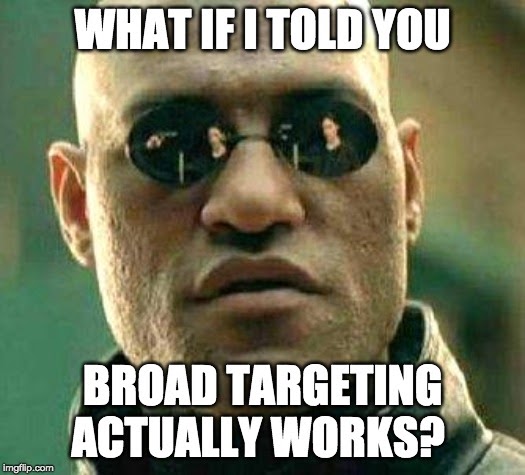
Sure, you might end up dragging in a few search terms that are completely irrelevant to your audiences, but you'll also be able to case a wide enough net to get all of your leftover search traffic.
How exactly? Well, hop on board and we'll take you on a little fishing expedition to find out.
Get brand new Google ad strategies straight to your inbox every week. 23,739 people already are!
What Is The Bottom Feeding Approach, Exactly?
The Bottom Feeding Approach - in its shortest definition - is the combination of the observation mode in Google Ads and Broad Match keyword targeting to reach search term audiences that your ordinary PPC campaigns will have previously cut out.
You can check out the latest episode of our BoostSauce podcast to hear the original experts behind the Bottom Feeding Approach:
Or, if you're more visually versed, you can check out our BoostBits video on the topic:
This means that you're going after leftovers here with the Bottom Feeding Approach. But, why would you do that? Well, frankly, it’s because your primary campaigns have a limit on the volume of traffic they can generate, relative to your budget. Obviously this degree will vary from brand to brand. But if you’re looking to take the next step in your growth, the Bottom Feeding Approach is a perfect next step.
Audiences & Observation Mode
Now, in terms of which audience you’ll be examining with the Bottom Feeding Technique, I can make it really easy for you: Add them all.
Why? Because you have no idea which leftovers might have a random but shockingly cost-effective symbiotic relationship with your campaigns.
For example, if you're advertising for "aftermarket car parts" there's a slim chance that the audience "Tommy Boy" is part of your PPC strategy. But, you'd be amazed how many people who love the Chris Farley classic actually are in the car parts business (like Tommy Boy himself).

So this might not actually be a horrible audience to examine.
In fact, you might even find out that the audience "Tommy Boy" paired with full broad match type “car parts” has a surprisingly low CPA and decide to keep it as a go-to audience for targeting later on.
If you'd relied solely on traditional PPC techniques that are proven to filter out bad traffic, you probably would've missed out on this one too.
This is what the Bottom Feeding Approach works to solve: Catching all the quality search terms that your previous targeting may've filtered out - aka: catching all your leftover fish food.
The Problem With Keyword Match Types
So why is it that we're hunting after leftovers in the first place? Where did they come from? Well, these valuable search terms that you're missing out on were only missed by following tried-and-true PPC strategies.
One of the first lessons paid advertisers are taught is how to improve their ad relevance (and thus traffic quality) by using different keyword match types.
By using multiple keyword match types for the same primary keyword in one ad group you can customize when exactly your ads are shown and which ad. Here at KlientBoost, we like to use different keyword match types in order to solve the Iceberg Effect.
The general idea is that the more layers of targeting you add, the smaller and more customized your audience becomes.
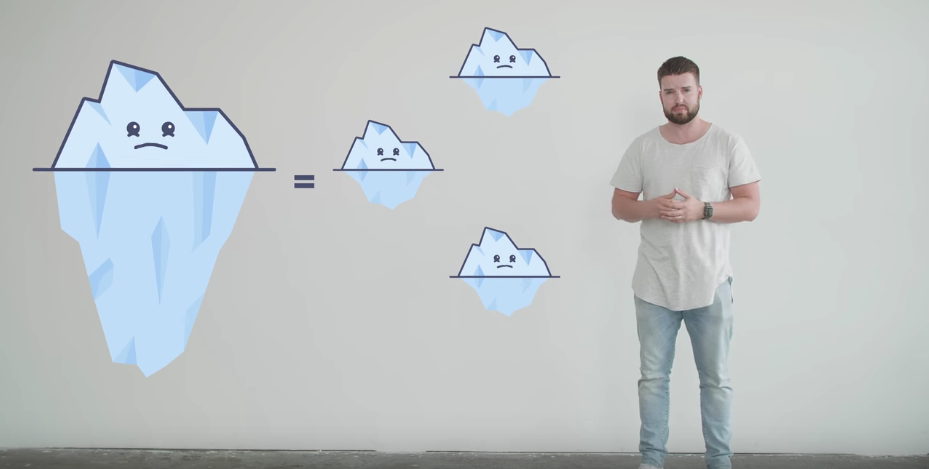
Generally speaking, each keyword match type has a different sized "iceberg" for the primary keyword. Or, in layman's terms, each keyword match type shows your ads to a smaller and smaller specified subset of your primary keyword audience. The order usually goes like this:
- Broad Match
- +Broad +Match +Modified
- "Phrase Match"
- [Exact Match]
This means that Broad Match has the broadest keyword:search term ratio, and therefore has the most irrelevant search terms triggering the ad to show. On the other hand, [Exact Match] will only show your ad for when someone types in your exact keyword into Google, meaning that it has the lowest keyword:search term ratio.
Now, we're most famous for here at KlientBoost for our Single Keyword Ad Groups Strategy. And for good reason; by using all the different keyword match types on isolated single keyword ad groups you can pair your search term ratio all the way down to 1:1.
However, this is also where the problem arises: you end up eliminating A LOT of search terms from the competition. And chances are at least a few of those were some winning flukes (tired of the fish puns yet?) worth taking a look at.

The Hypothesis: Using Broad Match Where It Works
Our hypothesis was fairly simple. It started with the basic idea: wouldn't it be great if we could use Broad Match targeting, which has the largest reach, without burning through our ad spend on irrelevant search terms?
Usually, we try to avoid Broad Match keywords in our campaigns in order to avoid targeting keywords with massive icebergs of irrelevant search terms. But, by using audiences and the Observation Mode of Google Ads before the Targeting Mode, could there be a way to find which audiences we should be targeting with Broad level keywords in order to gobble up the leftovers?
Yes, there is. But before I get into how the Bottom Feeding Approach works, it's important to put a disclaimer on this PPC strategy:
WARNING: The Bottom Feeding Approach is only for brands who've already plateaued in terms of PPC traffic generation, and are looking to milk their campaigns for the last bit of quality traffic left. This isn't a strategy for beginning PPC campaigns, which should probably rely on more traditional tactics to lower CPC and CPA before trying to max out traffic and conversions altogether.
Now that we've handled our little warning, let's talk about how the Bottom Feeding Approach can help you eat up the remainder of your quality traffic.
The Solution: How The Bottom Feeding Approach Works
First off: why are we even going after these leftover search terms?
Well...simple: We're greedy.
And isn't that one of the best qualities of any aspiring PPC advertiser? I sure think so.
Think of it this way: when a fishing line is cast down into the ocean, the fishing food on the hook is the search traffic readily generated by your PPC campaigns. But, the lower it sinks, the more specific types of unique fish (different SKAGs, RLSAs, and other campaigns) come to take nibbles off the hook - never eating all of it.
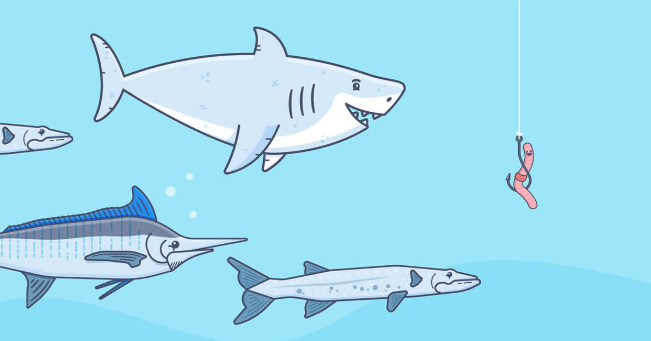
What this means is that, eventually, your fishing hook is going to reach the bottom of the seafloor with some remaining fish food left on the line (aka: potentially relevant search traffic you missed out on). Whatever made it through that massive filtration process of all your aggressively targeted, conversion hunting SKAGs, is what we're eating up with the Bottom Feeding Approach.
And if you haven't been convinced yet, the screenshot below should show you just why going after these leftovers is worth it.
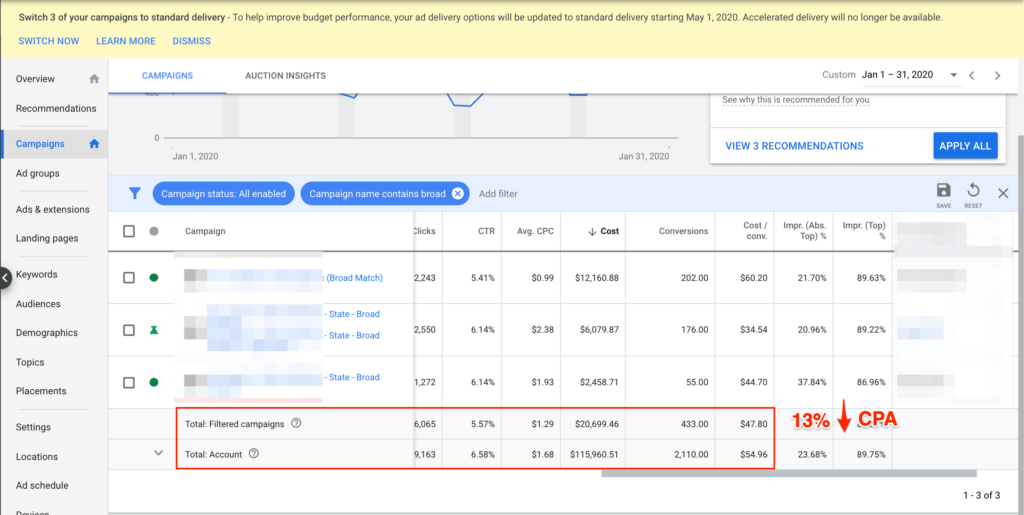
So, to get started, we need to understand the differences between Observation Mode and Targeting Mode within the Google Ads platform. While the first doesn't actually manage your campaigns, the ladder actually restricts what traffic sees your ads and thus only comes in once you want to start filtering your traffic.
Let's take a deeper look into how Observation and Targeting work within Google ads so we have a strong idea of how the Bottom Feeding Approach will work.
Observation & Targeting Mode With The Bottom Feeding Approach
It turns out that there isn't a limit when it comes to adding audiences to the Observation Mode of Google Ads. So, because Observation Mode is just that - observation only - why not add them all?
Yeah, that's right, we suggest adding all the audiences you can think of to the Observation Mode. Why? Well, the whole reason behind the Bottom Feeding Approach is that you never know what random long-tail search term might end up being a surprising cash cow with a magically low CPA that wouldn’t have been caught by your primary campaigns.
This is why you use the Observation Mode in the beginning of our strategy. While in Observation, Google will track on all the different micro metrics of how your audiences interact with your keywords. After giving them enough time in Observation Mode, you should be left with about 10-15% of the audiences you originally added that show some promise.
This is where things start getting fun.
Now that you know which audiences show promise, you can extract them from the Observation Mode and add them into a brand new campaign at the Targeting Level. Because the targeting level actually restricts traffic, you should be left with a Venn Diagram that looks something like this:
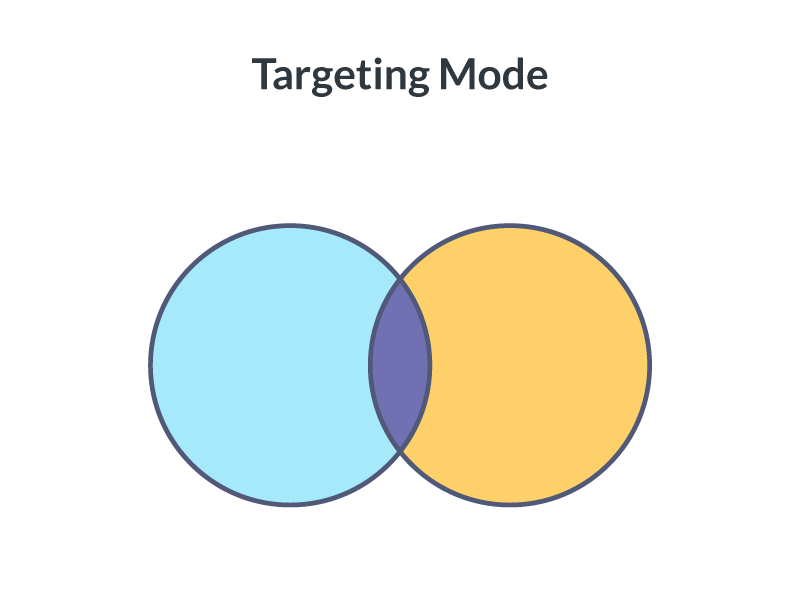
This is where you know you have a high chance of success because these users have already passed through so many rounds of filtration that it's worth going after the whole audience even if it's Broad Match.
Introducing The Flounder: Broad Match Targeting & Audiences
And finally we come to the Broad Match Audience Targeting campaign - what we like to call the "flounder" of the Bottom Feeding Approach. This is the campaign that you use to eat up all that leftover fish food left hanging on the hook at the bottom of the seafloor.
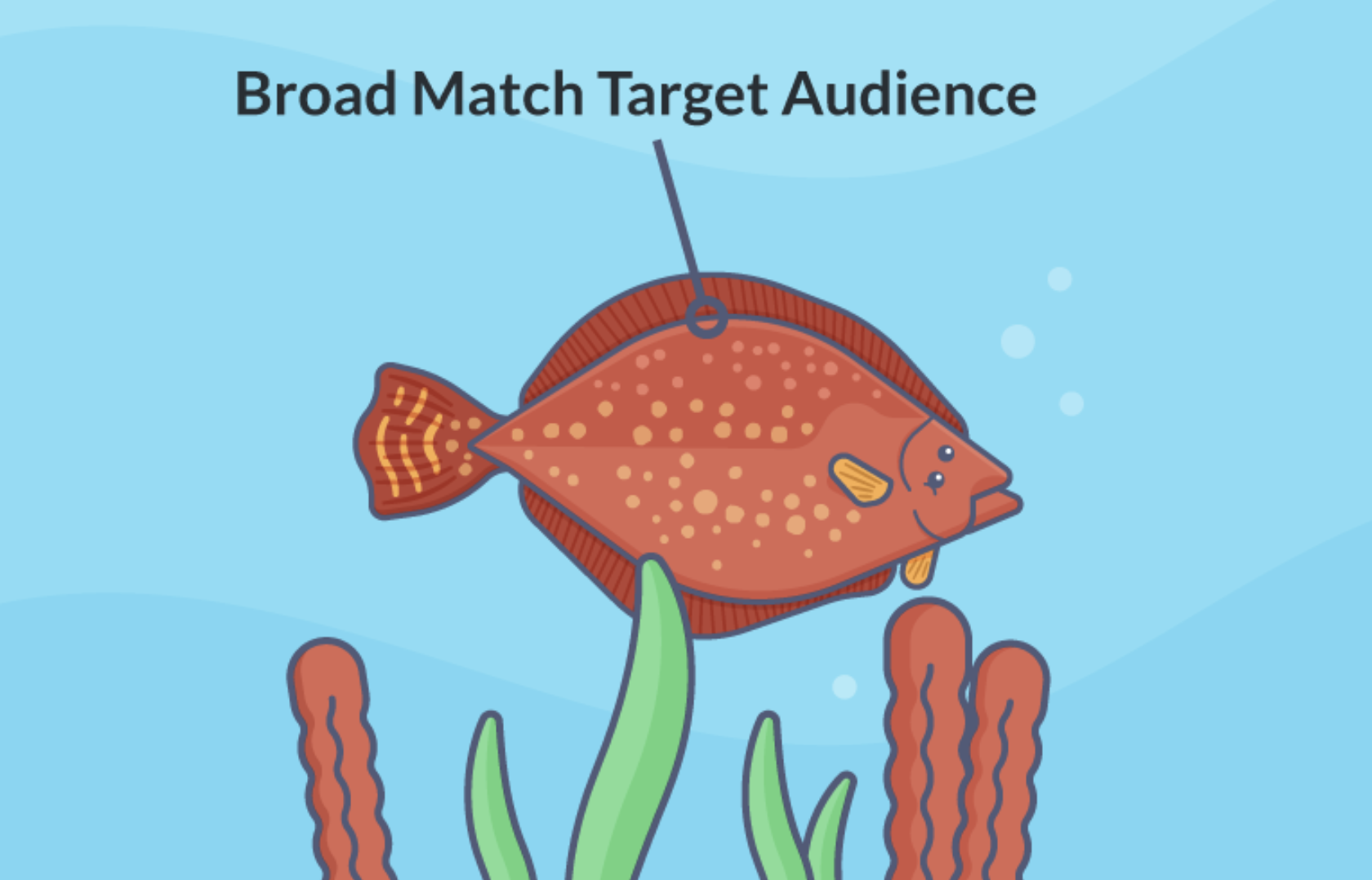
Thanks to the original success of your SKAGs and keyword optimization, and the secondary use of the Observation Mode with Google Ads, you can rely on the remaining audiences to be a strong fit for your brand. This means that you can go full Broad Match with your targeting and focus on volume instead of quality.
Now it's time for your flounder to eat his fill ;).
NOTE: A final disclaimer about the Bottom Feeding Approach - It only works for PPC advertisers who write PPC copy that converts. The Bottom Feeding Approach is all about being able to find the fluke search terms that your brand can advertise on, but it’s still up to you as a digital copywriter to convert the lead/sale. This is where Google’s user-centric evolution begins to shine through.
Start using the Bottom Feeding Approach to eat up the last bites of quality traffic in your search campaigns and let us know how it worked for you!
What Do We See Coming Next?
The reason the Bottom Feeding Approach works so well is that Google is becoming more efficient at finding the right users for our campaigns from the get-go. The more advanced Google becomes with its observation algorithms and the better it’s able to customize your audiences, the less important keyword targeting will become as a whole.
Who knows - maybe someday soon we won’t be setting any filtration at all, but simply bidding on keywords and competing with truly impressive ad copy and creative. The next evolution of Google Advertising may very well put more emphasis on the copy and creative side of advertising than the targeting and bid management.
Google wants to emphasize the importance of the user’s experience over the cleverness of the advertiser. In which case, are you prepared for that transition?
Get in touch with the masterminds behind The Bottom Feeding Approach to look past the classic PPC strategies towards what the future holds.